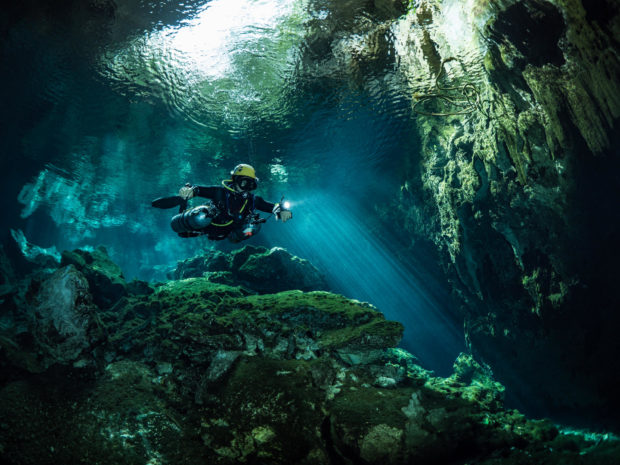Five tips when preparing for your cave training

DIVER Photographer Maxwel Hohn shares five preparation tips for your cave course
I just completed my TDI Full Cave Diver certification in Puerto Aventuras, Mexico. I’ve wanted to do this course for some years now, as it can help you become a better overall diver, and for me, leads to a new world of underwater photography possibilities. Written as I fly home from Mexico, everything fresh in my mind, I wanted to share a few tips that may help you prepare for your cave diving training:
1. One of the most important skills you can master before you begin training is buoyancy control. Caves are fragile and hostile environments. We want to preserve these sites by maintaining good buoyancy control to avoid damaging the cave and also to prevent stirring up the bottom sediment which can lead to a silt out. Tune in your buoyancy and trim and ensure you have plenty of practice with good buoyancy control before going into a cavern environment.
2. Use the right tool for the job. Having the right equipment is crucial. Everything should fit comfortably and be in a good working condition. Whether you use back mounted twins or sidemount you should be completely comfortable and streamlined in your equipment prior to cave training. You will need two of nearly every piece of equipment for redundancy and three light sources. Contact your instructor for more details prior to training.
3. Master your gas management and air consumption. Learn to glide effortlessly through the water while keeping your heart rate down. Movements should be slow and methodical using the least amount of energy as possible which will allow your breathing rate to slow while keeping a consistent rhythm of air consumption.
4. Learn the appropriate kick styles for over head environments. The frog kick is the most used method of propulsion. It allows you to get very close to the bottom and between objects without stirring up silt. The modified frog kick utilizes you’re ankles to provided propulsion in confined spaces. The helicopter turn is ideal for changing position will rotating on a dime. And finally learn how to kick backwards. This style utilizes the frog kick in an opposite direction and it’s very important in confined space.
5. Ensure you have a practice with reels. Finger spools and compact reels are the most commonly used in cave environments. Practice deploying a line on land and getting a feel for laying and retrieving the line. The line should always be taught and never touch the bottom to avoid pinch points and snags. Once comfortable in bare hands try practicing while wearing gloves. Your cave diving instructor will provide you with techniques to deploy and retrieve the line in various scenarios but it’s good to get a feel of using the reels prior to the course.
Maxwel Hohn is regular photographic contributor to DIVER magazine, he is also our resident online photography expert. Maxwel is a published and prize winning underwater photographer, certified drone pilot, social media expert, and videographer. He is a commercial diving instructor, tech instructor, and ambassador for Hollis, Oceanic, Stahlsac, Suunto, Zeagle and Hollis Rebreathers. For more: www.maxwelhohn.com
Leave a Comment







